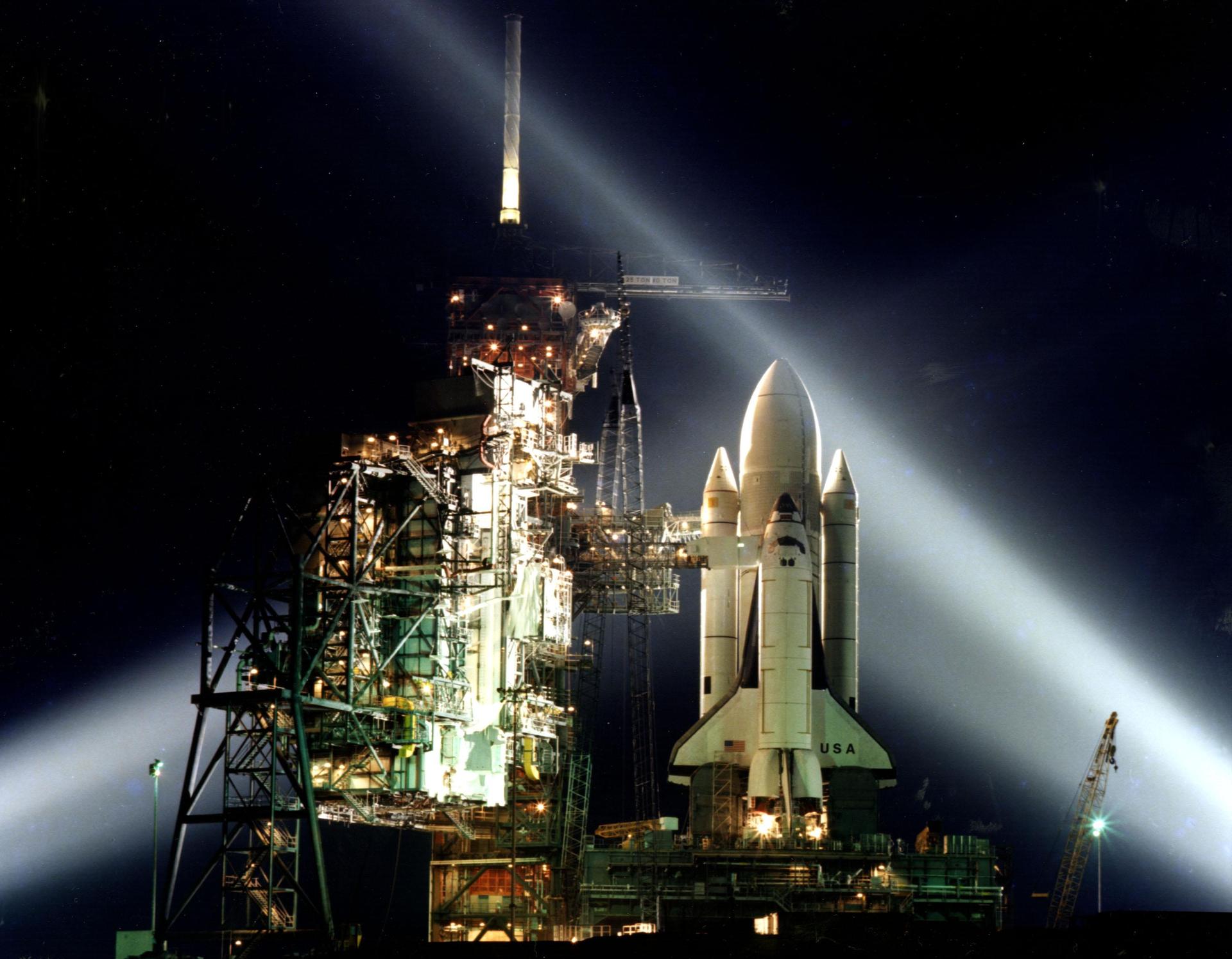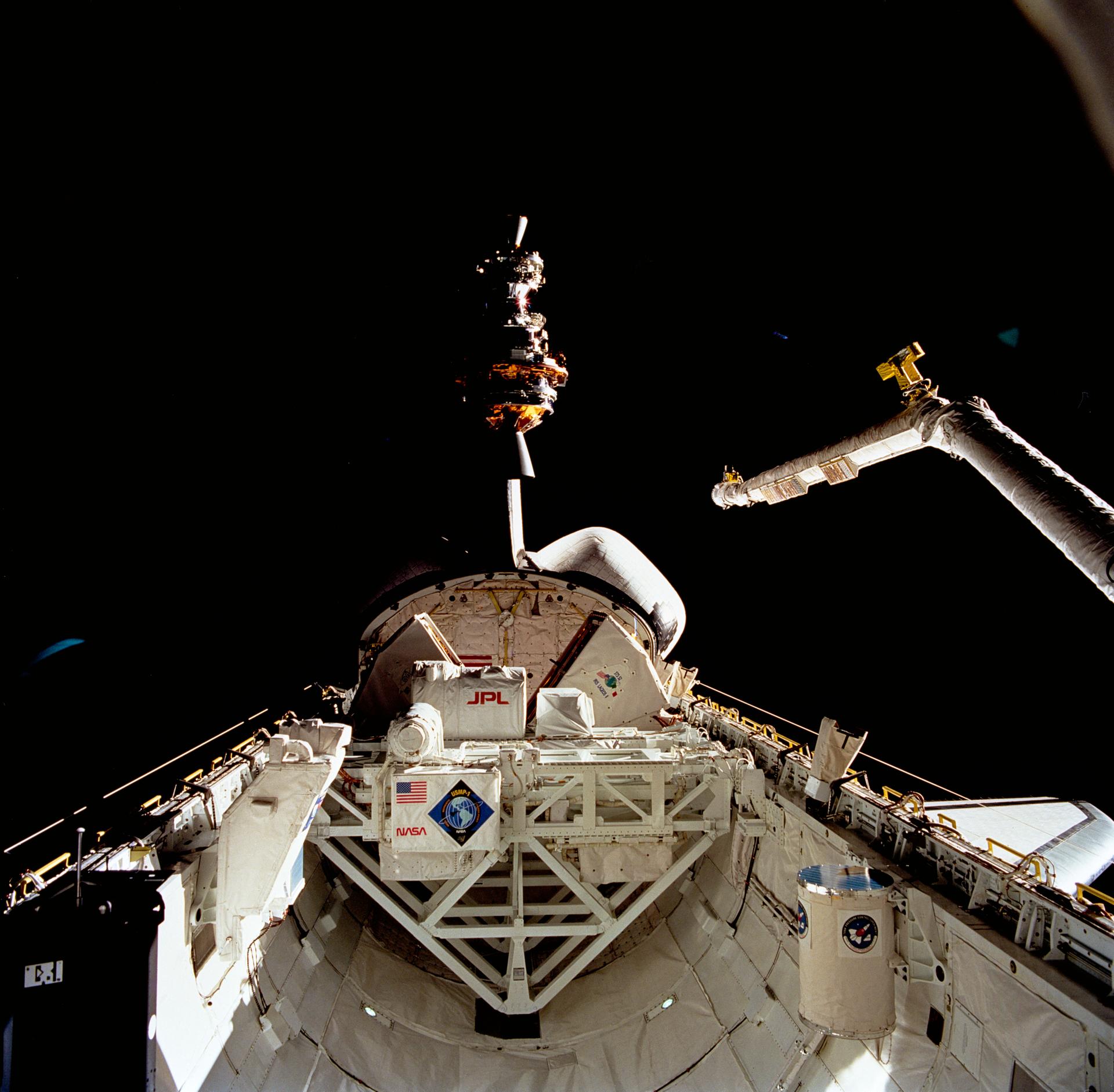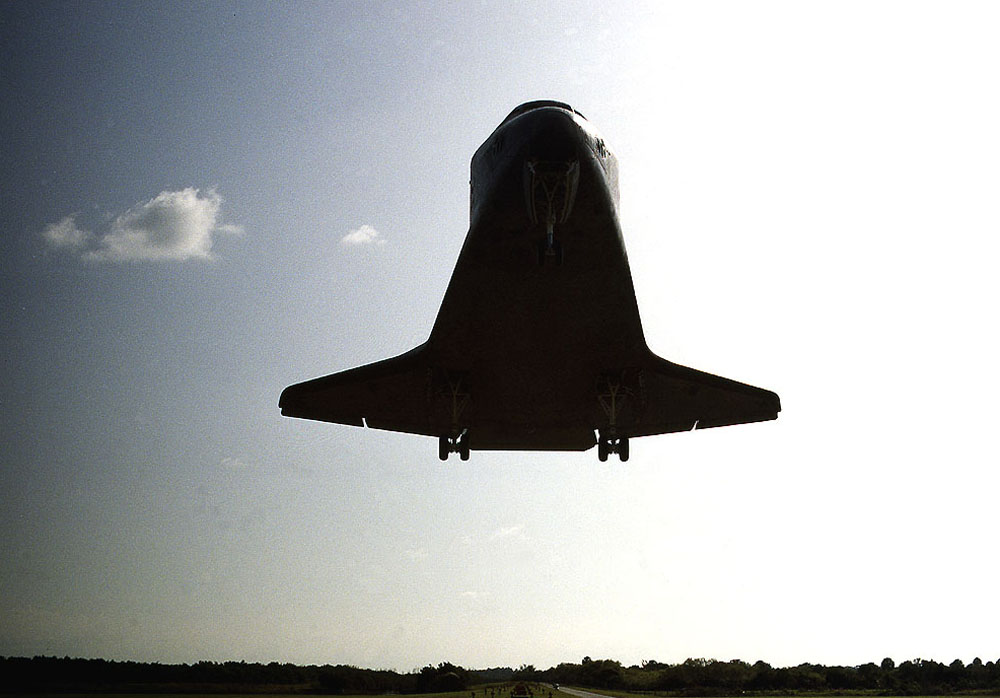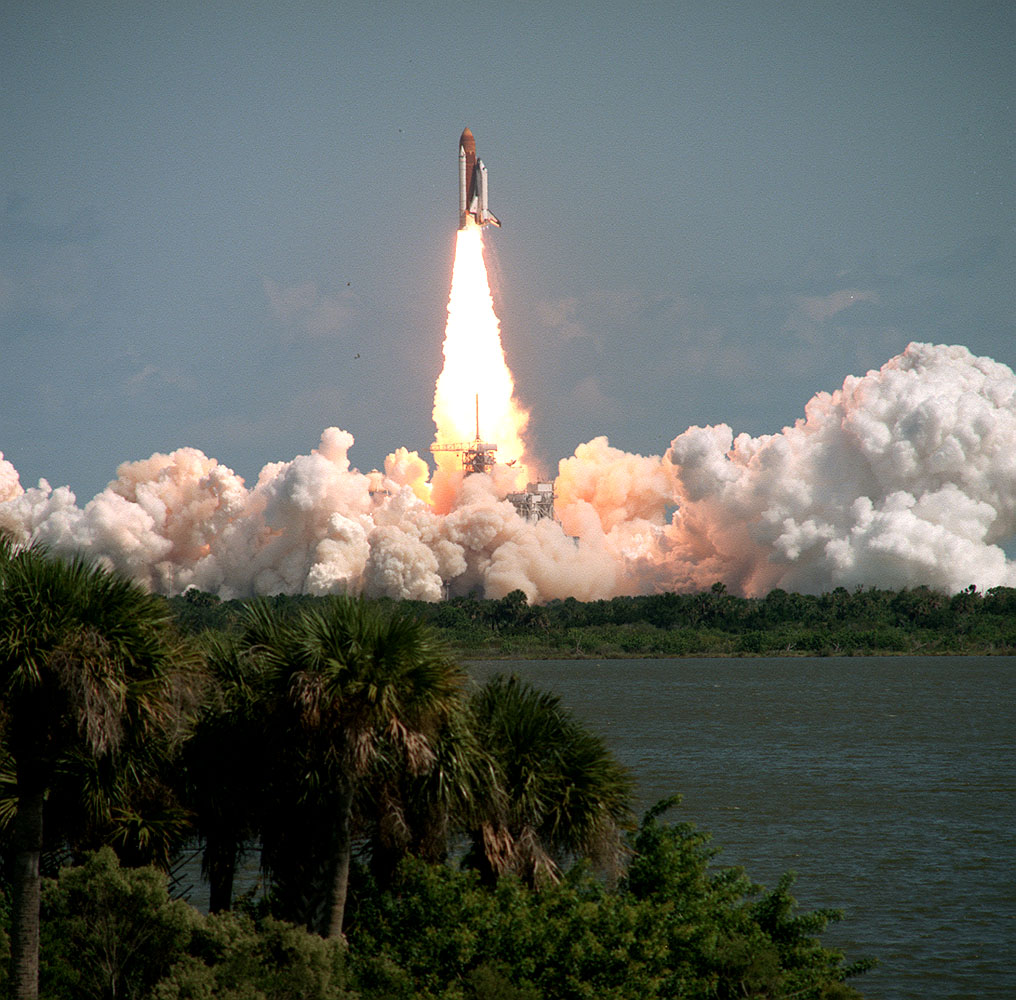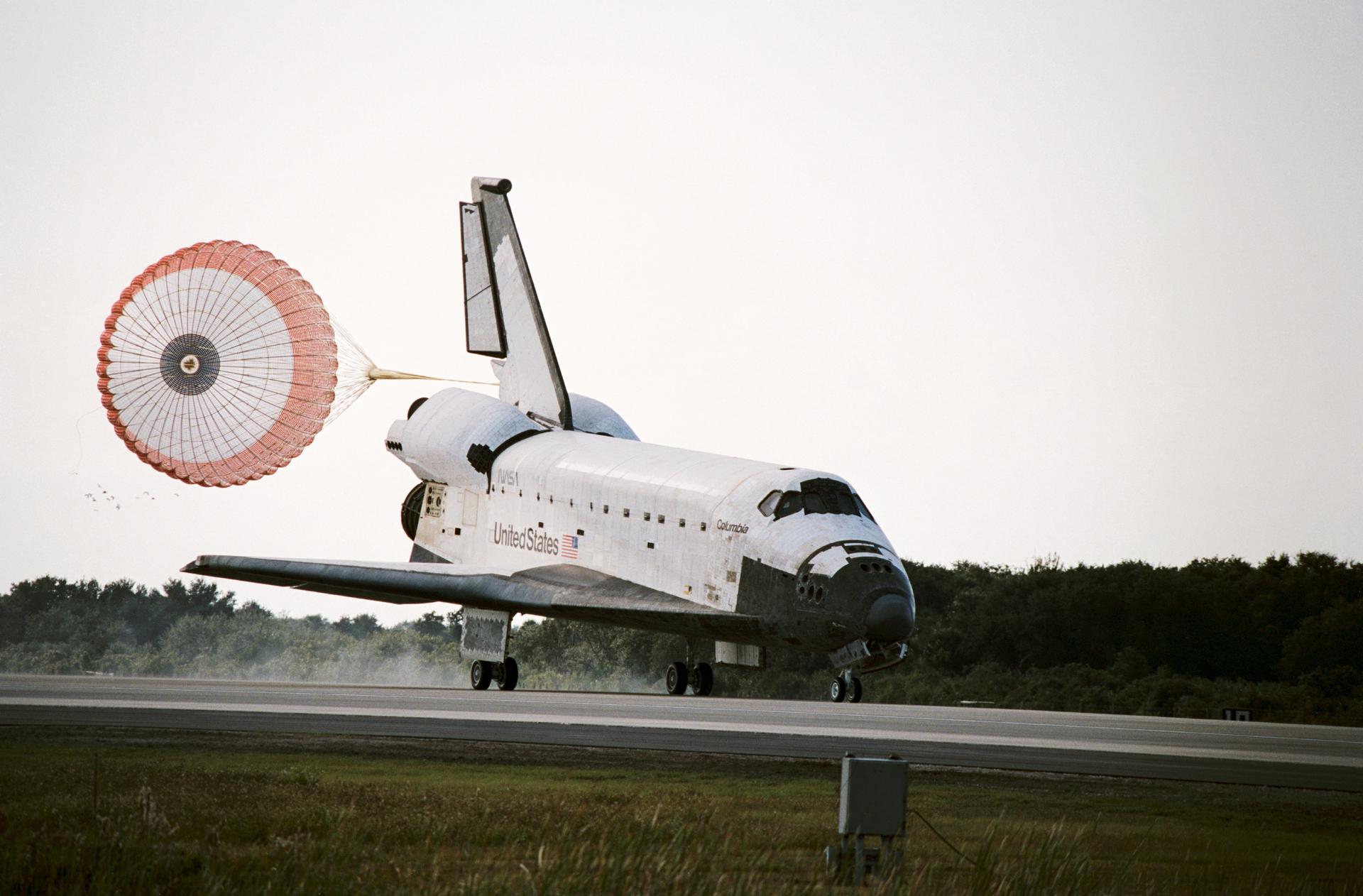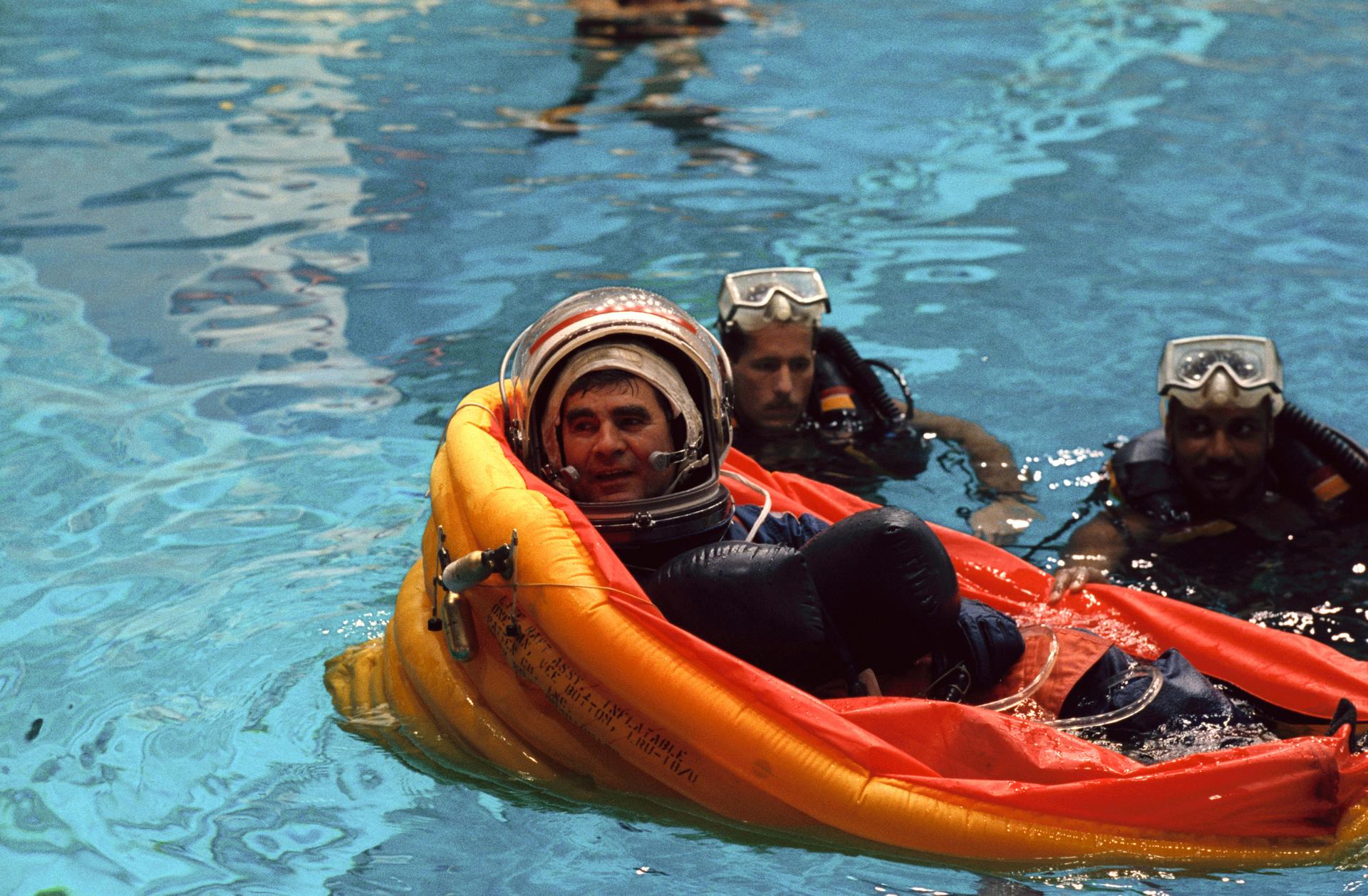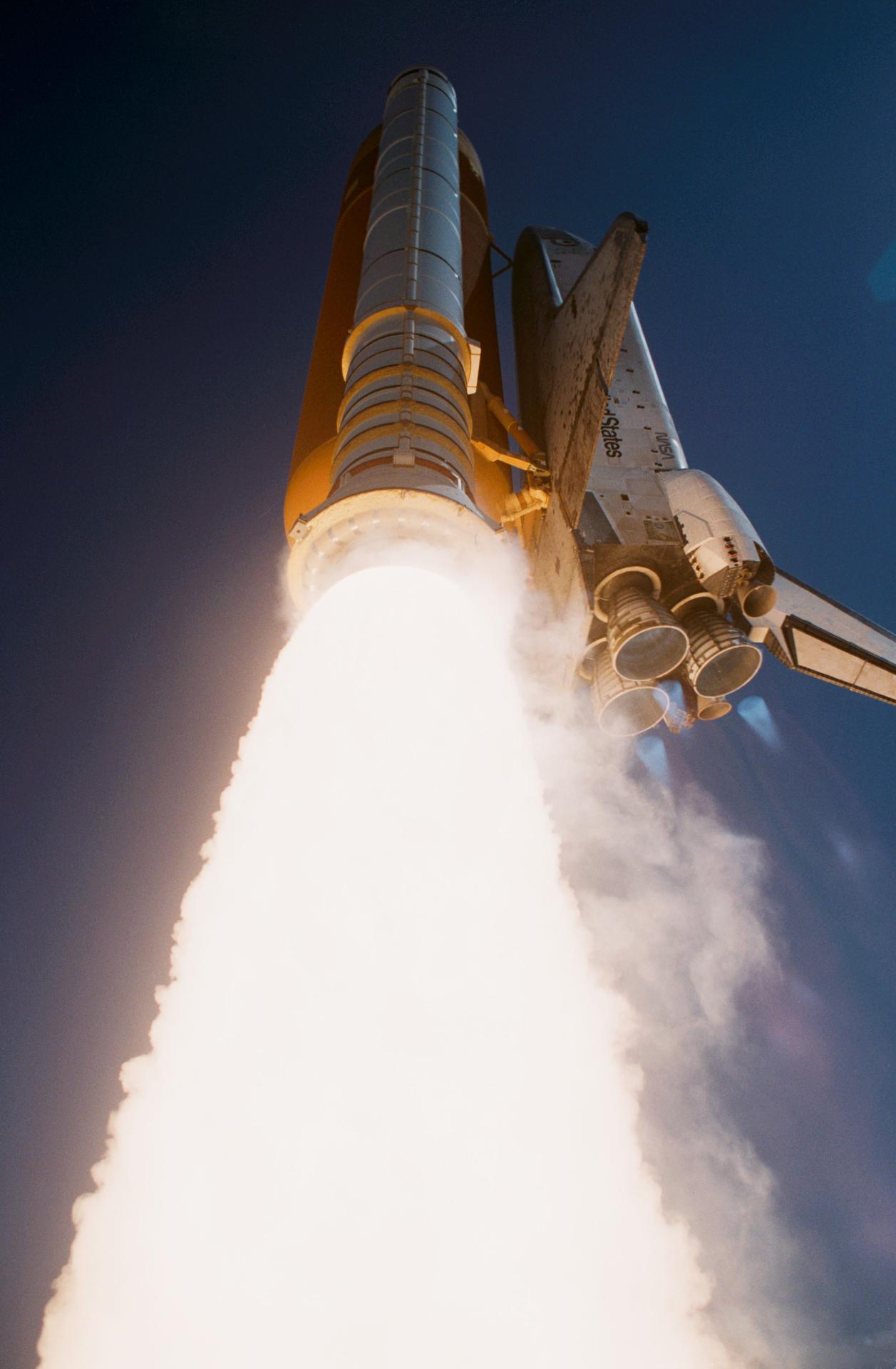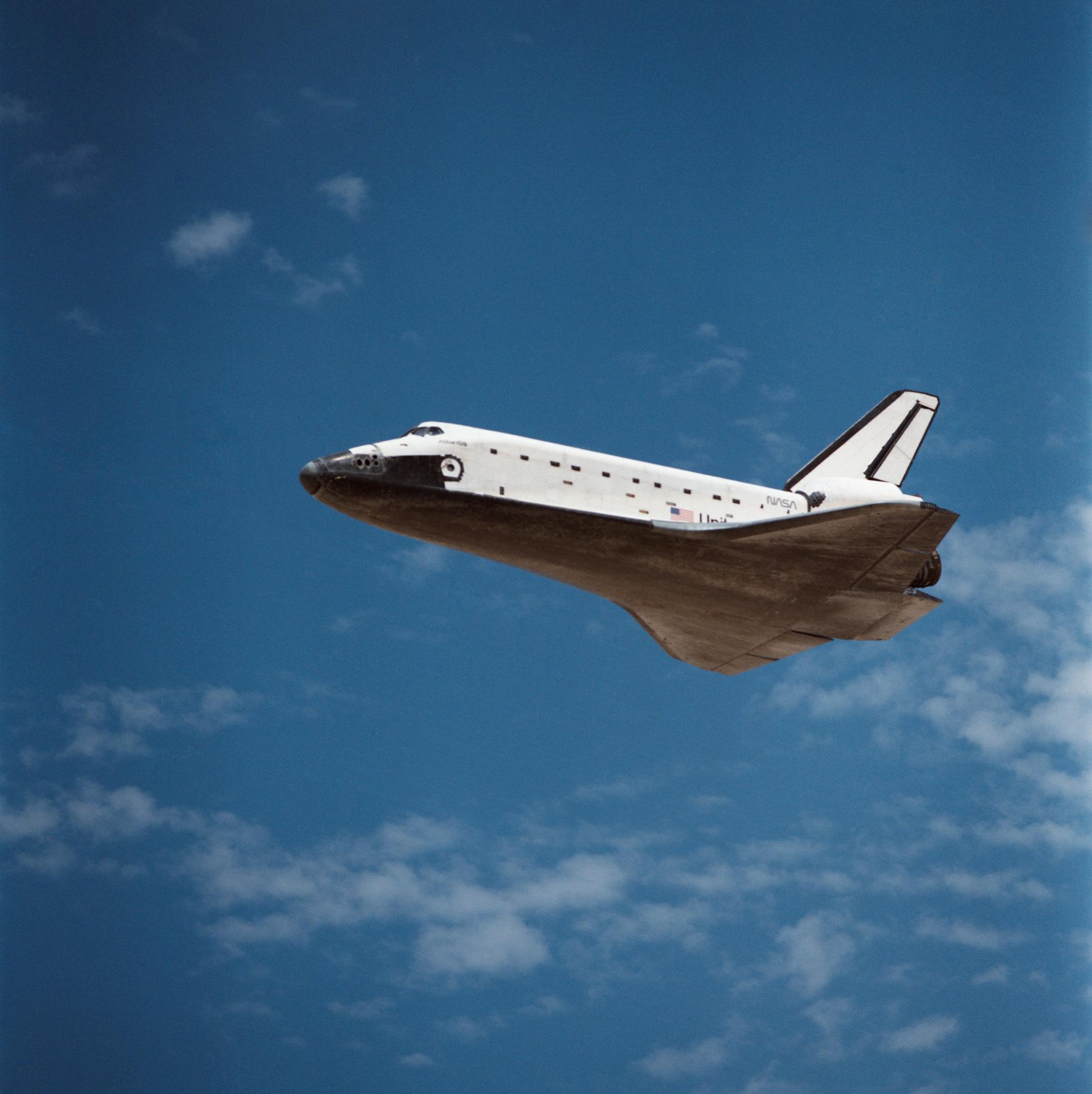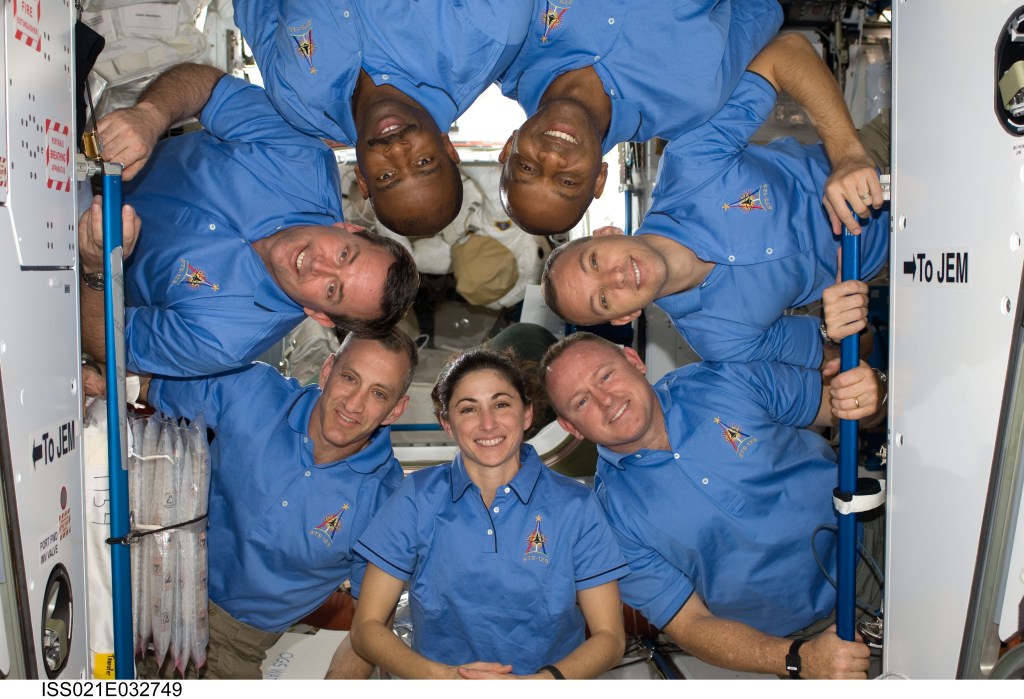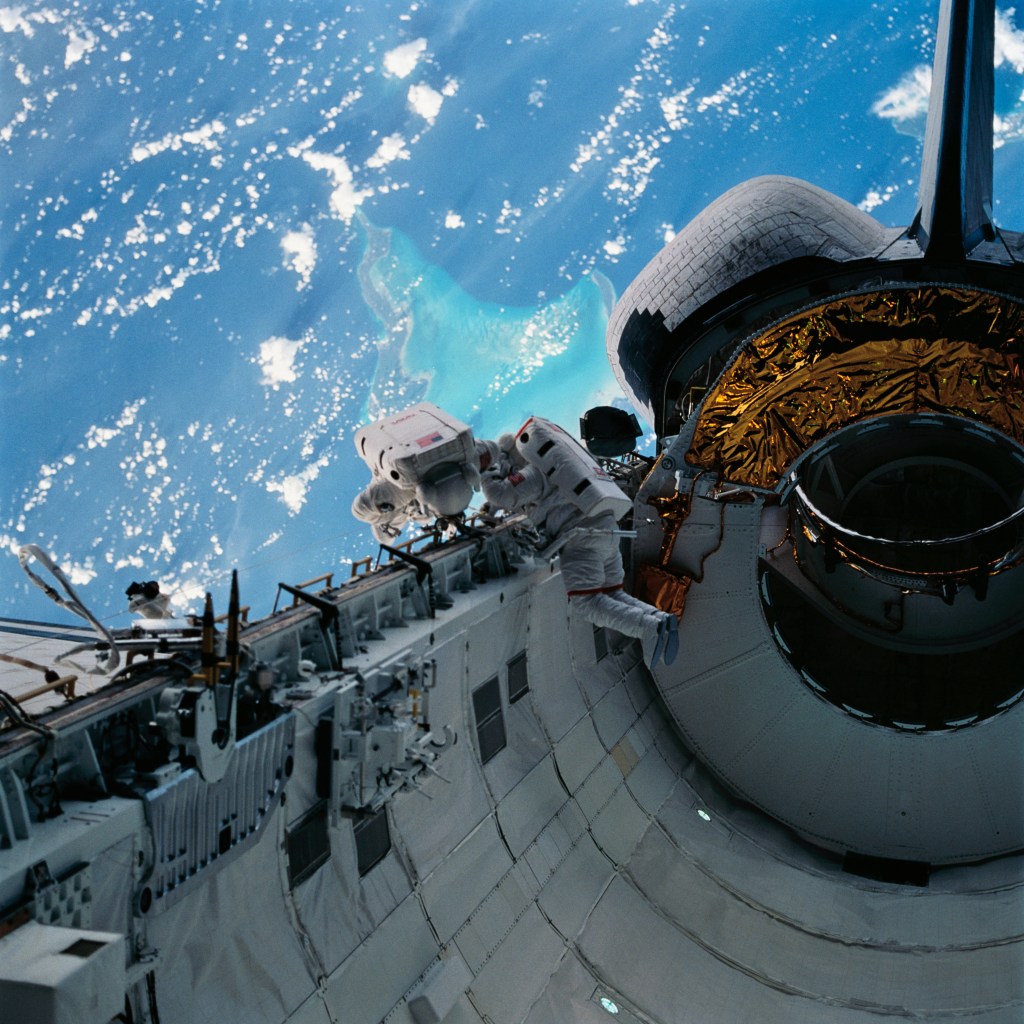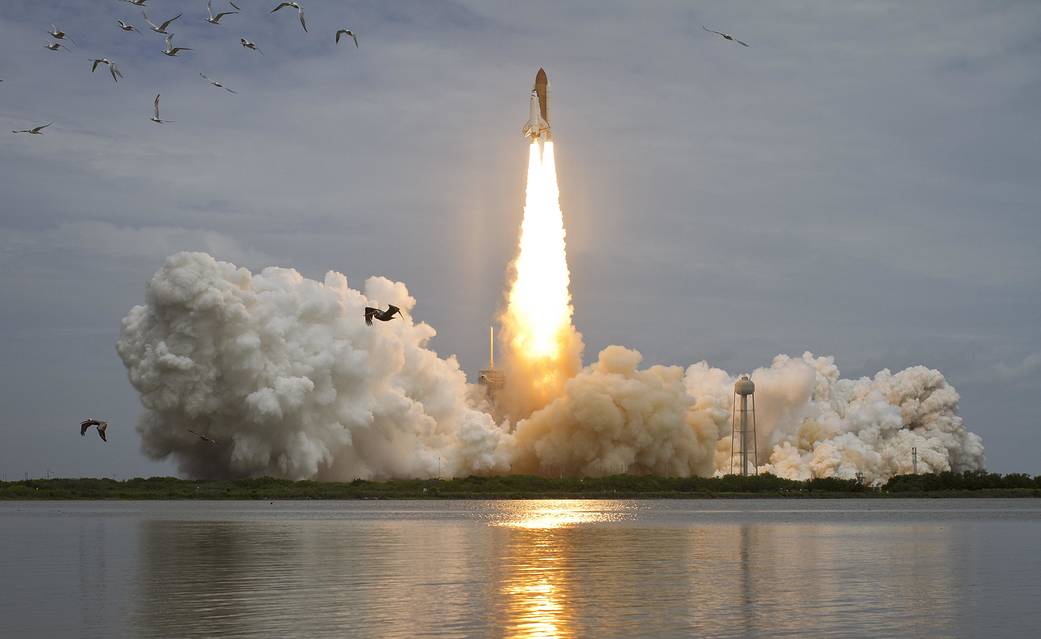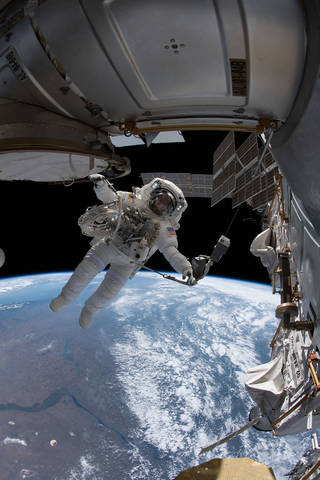
STS-52
The primary mission objectives were the deployment of the Laser Geodynamic Satellite II (LAGEOS-II) and operation of the U.S. Microgravity Payload-1 (USMP-1).
orbiter
mission duration
Launch
Landing

STS-52 Mission Facts
Mission: USMP-1; LAGEOS II
Space Shuttle: Columbia
Launch Pad: 39B
Launch Weight: 250,130 pounds
Launched: October 22, 1992, 1:09:39:33 p.m. EDT
Landing Site: Kennedy Space Center, Florida
Landing: November 1, 1992, 9:05:52 a.m. EST
Landing Weight: 215,114 pounds
Runway: 33
Rollout Distance: 10,708 feet
Rollout Time: 63 seconds
Revolution: 159
Mission Duration: 9 days, 20 hours, 56 minutes and 13 seconds
Orbit Altitude: 163 nautical miles
Orbit Inclination: 28.45 degrees
Miles Traveled: 4.1 million
Crew
James D. Wetherbee, Commander
Michael A. Baker, Pilot
Charles L. Veach, Mission Specialist
William M. Shepherd, Mission Specialist
Tamara E. Jernigan, Mission Specialist
Steven A. MacLean, Payload Specialist
Mission Highlights
The primary mission objectives were the deployment of the Laser Geodynamic Satellite II (LAGEOS-II) and operation of the U.S. Microgravity Payload-1 (USMP-1). LAGEOS-II, a joint effort between NASA and the Italian Space Agency (ASI), was deployed on day two and boosted into an initial elliptical orbit by ASI’s Italian Research Interim Stage (IRIS). The spacecraft’s apogee kick motor later circularized LAGEOS orbit at its operational altitude of 3,666 miles. The USMP-1, which was activated on day one, included three experiments mounted on two connected Mission Peculiar Equipment Support Structures (MPESS) mounted in the orbiter’s cargo bay. USMP-1 experiments were: Lambda Point Experiment; Materiel Pour L’Etude Des Phenomenes Interessant La Solidification Sur Et En Orbite (MEPHISTO), sponsored by the French agency Centre National d’Etudes Spatiales; and Space Acceleration Measurement System (SAMS).
Secondary payloads: (1) Canadian experiment, CANEX-2, located in both the orbiter’s cargo bay and middeck and which consisted of Space Vision System (SVS); Materials Exposure in Low-Earth Orbit (MELEO); Queen’s University Experiment in Liquid-Metal Diffusion (QUELD); Phase Partitioning in Liquids (PARLIQ); Sun Photospectrometer Earth Atmosphere Measurement-2 (SPEAM-2); Orbiter Glow-2 (OGLOW-2); and Space Adaptation Tests and Observations (SATO). A small, specially marked satellite, the Canadian Target Assembly, was deployed on day nine, to support SVS experiments. (2) ASP, featuring three independent sensors mounted on a Hitchhiker plate in the cargo bay -, Modular Star Sensor, Yaw Earth Sensor and Low Altitude Conical Earth Sensor, all provided by the European Space Agency.
Other middeck payloads: Commercial Materials Dispersion Apparatus Instrument Technology Associates Experiments; Commercial Protein Crystal Growth experiment; Chemical Vapor Transport Experiment; Heat Pipe Performance Experiment; Physiological Systems Experiment (involving 12 rodents); and Shuttle Plume Impingement Experiment. The orbiter also was used as a reference point for calibrating an Ultraviolet Plume Instrument on an orbiting Strategic Defense Initiative Organization satellite.
The Tank Pressure Control Experiment/Thermal Phenomena (TPCE/TP) was contained in a Getaway Special (GAS) canister in the orbiter’s cargo bay.
STS-52
Shuttle News
Retired Space Shuttle Locations
Shuttle Atlantis – Kennedy Space Center Visitor Complex Shuttle Discovery – Steven F. Udvar-Hazy Center Shuttle Endeavour – California Science…
Read the Story